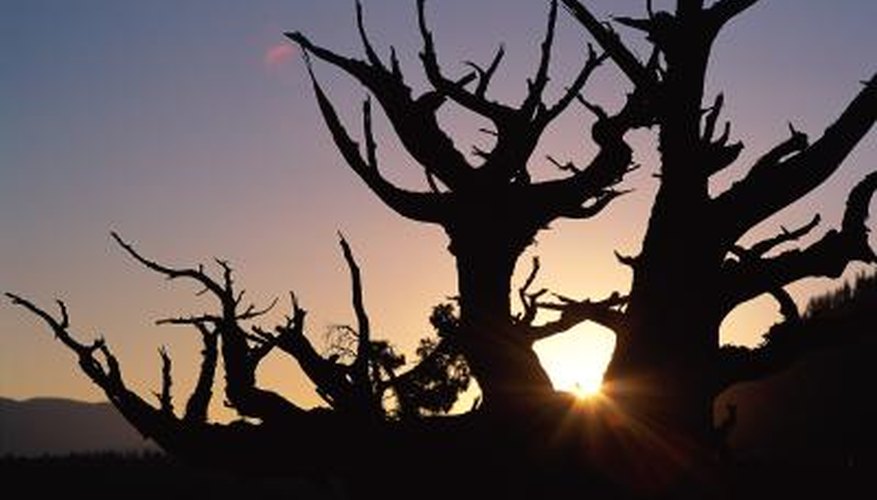The tree is one of the strongest and most recognisable types of plants. Some are able to withstand thousands of pounds of pressure from winter snows while others are resilient enough to handle hurricane force winds every year. While no one tree is strongest in every area, several trees excel in different types of strength.
The Hardest
Although many hardwoods, including oak, maple and rosewood, are used in furniture and construction projects, the hardest wood of them all is also hard to find. The tree Guaiacum officinale, which yields the wood lignum vitae, is the hardest wood in the world with a gravity of 1.37 and a maximum hardness of 2041 Kilogram per square foot. This makes the wood strong enough for use in commercial boating and other strenuous tasks. Unfortunately, exploitation of this resource has driven lignum vitae, which means wood of life, to the endangered species list.
- Although many hardwoods, including oak, maple and rosewood, are used in furniture and construction projects, the hardest wood of them all is also hard to find.
The Most Resilient
The yew tree was the tree of choice for British bow makers in medieval times. This was because the wood is strong yet flexible and would bend far before breaking. In fact, this quality -- along with the yew tree's high resistance to rot, infestation and weathering -- makes the yew tree the most resilient of trees. This resilience has paid off for the yew, which can live for 2,000 years or more.
- The yew tree was the tree of choice for British bow makers in medieval times.
- This resilience has paid off for the yew, which can live for 2,000 years or more.
Beats Surrounding Vegetation
Spreading quickly and taking over land from other plants, invasive trees are some of the strongest evolutionary competitors. Standing alone above the rest is Miconia calvescens, the bush currant. This plant invades tropical rainforests on the continental South America as well as islands as far away as the South Pacific. The tree grows quickly, strangling the root systems of surrounding plants and shading out smaller species. This tree has spread so quickly through rainforests that it has earned nicknames such as "green cancer of Tahiti," where the plant has taken over half the island, and "the purple plague of Hawaii," where it has also gained a substantial foothold.
- Spreading quickly and taking over land from other plants, invasive trees are some of the strongest evolutionary competitors.
- This tree has spread so quickly through rainforests that it has earned nicknames such as "green cancer of Tahiti," where the plant has taken over half the island, and "the purple plague of Hawaii," where it has also gained a substantial foothold.
The Longest Lived
The yew may be the most resilient but it is far from the oldest tree. If strength lay in longevity, then the title must go to the bristlecone pine. This oldest of the gnarled and grey Pinus longaeva live at elevations of up to 11,000 feet in the White Mountains of California. These trees live for thousands of years with the oldest, named Methuselah, dated at 4,789 years old. These trees grow only to about 60 feet tall with an average growth rate of only 0.01 inch per year.
- The yew may be the most resilient but it is far from the oldest tree.
- These trees live for thousands of years with the oldest, named Methuselah, dated at 4,789 years old.
